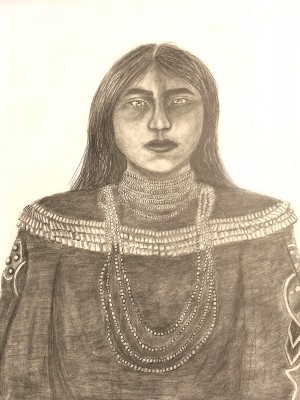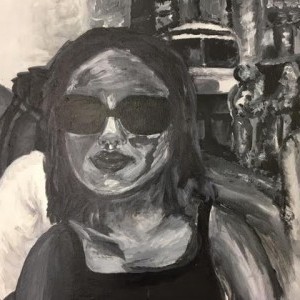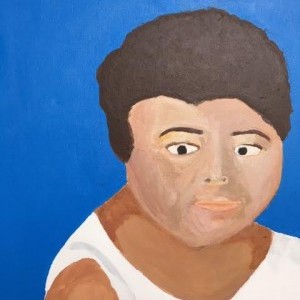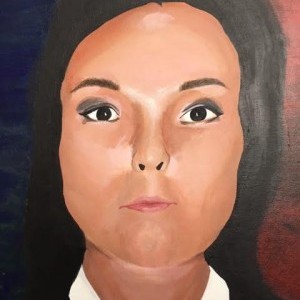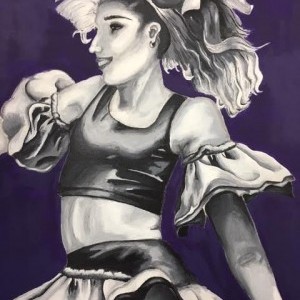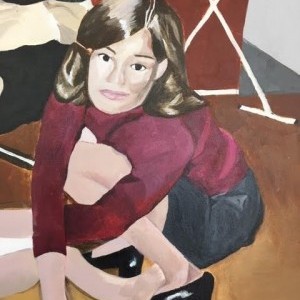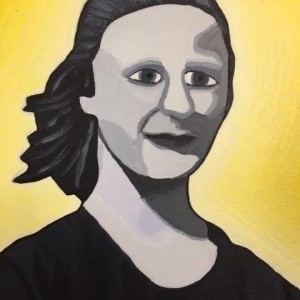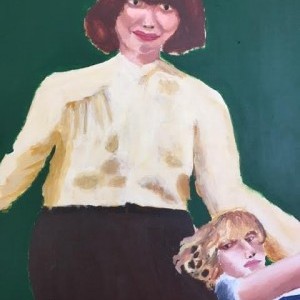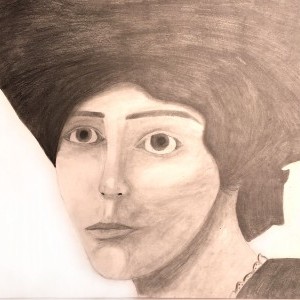Charlotte Reynolds
Immaculate Heart High School | Los Angeles, CA | 9-12th Grade
Historical Figure I Admire
Lozen, Chiricahua Apache Medicine Woman and Warrior
Lozen was a Chihenne Chiricahua Apache woman, who was renowned as a skilled warrior, strategist, mediator and medicine person. She was born in 1840, and died in June of 1889. Lozen fought alongside her brother, Chief Victorio (Bi-duyé), as his right hand to prevent the United States from encroaching on their land. She was gifted in strategy, horseback riding and shooting, and seemingly had the supernatural ability to know where the enemy was going to appear.
Born in 1840, Lozen emerged as a leader within her community at a young age, well before she became a warrior and medicine person. Lozen was deeply honored for her strength, fearlessness, and physicality. Her skills in fighting, roping, riding, and horse stealing were legendary. She was considered as formidable a fighter as her brother. Chief Victorio is reported as saying, “Lozen is as my right hand. Strong as a man, braver than most, and cunning in strategy, Lozen is a shield to her people.” Not only was she praised for her physical prowess, but she was also highly renowned and respected for her immense knowledge of medicinal properties of minerals and plants. She continued to do traditionally women’s chores, but also tended to their horses. During a vigil during her coming-of-age ceremony, she was reportedly blessed with the power to heal wounds and locate the enemy. After that, Lozen began to study with other shamans, undertook additional vision quests, and eventually earned the title of medicine person.
In 1871, the United States offered to establish a reservation for the Apaches under Chief Victorio at Warm Springs in New Mexico. After consulting with Lozen, Chief Victorio agreed. However, the United States went back on their promise, and moved the Apaches to a much less favorable location. In 1876, Chief Victorio and some others, including Lozen, fled the reservation. They eluded capture for three years. In those years, the Apache leaders relied on Lozen’s battle, medical, and prediction skills to survive. Lozen joined her brother on raids, attended war dances, and participate in councils. Her peers described her as sacred and respected above all other women.
In the fall of 1880, Chief Victorio was being pursued in Texas when a woman in his band went into labor. Lozen stayed behind with the woman until she had given birth, and then single-handedly escorted the new mom and infant across New Mexico to the Mescalero Apache reservation. Even though she only had a rifle, a knife, and food for three days, she agreed to help them make the perilous journey. On the way, afraid that firing her gun would give away their location, Lozen single-handedly used a knife to take down a longhorn so the three could eat. She stole a Mexican cavalry horse for the mother, and escaped through gunfire unscathed. She also stole a vaquero’s horse for herself, a soldier’s saddle, ammunition, canteen and blanket, and even his shirt without getting caught. In the end, Lozen managed to get all three of them safely to the reservation, all the while evading both United States and Mexican forces. Unfortunately, during this time Chief Victorio and his forces had been caught by the Mexican military, and he was killed along with 78 others. After finding out about the loss of her brother, Lozen then joined forces with Geronimo (Goyatla), where she met Dahteste. Dahteste was also a female warrior since youth, and was known for being fluent in English and acting as a translator. The two were quickly inseparable.
In the spring of 1883, Lozen adopted the role of a mediator alongside Dahteste when they arranged a meeting with General George Crook to discuss a possible peace treaty. After this meeting, Geronimo agreed to return to Fort Apache but in the spring of 1885 they fled again due to terrible conditions. Lozen and Dahteste joined him. However, to prevent the over 400 Apaches who were still on the reservation from joining them, General Nelson Miles had them all incarcerated and sent to Florida. In the late summer of 1886, Lozen and Dahteste appeared at a camp of American soldiers in New Mexico and stated that Geronimo was willing to discuss peace treaties again. The soldiers agreed, but the United States again went back on their promises when instead of negotiating a treaty when Geronimo, Lozen, Dahteste and the rest of their troops showed up, arrested them all instead. They were all sent to Florida to be imprisoned with the rest of the Apaches, who would remain prisoners of war until 1913. Lozen and Dahteste appear huddled together in a famous photograph taken of the Apaches shortly after they were arrested. From Florida, Lozen and some others were moved to Mount Vernon in Mobile, Alabama. Lozen died there in 1889 of tuberculosis as a prisoner of war. She was buried in an unmarked grave, along with 250 other Apaches who had perished there.
Explore the Archive
More From This Class
Click on the thumbnails below to view each student's work.Deadline Extended
There's still time to join Women Leading the Way.
Become a part of our storytelling archive. Enroll your class today.
Join the Project

